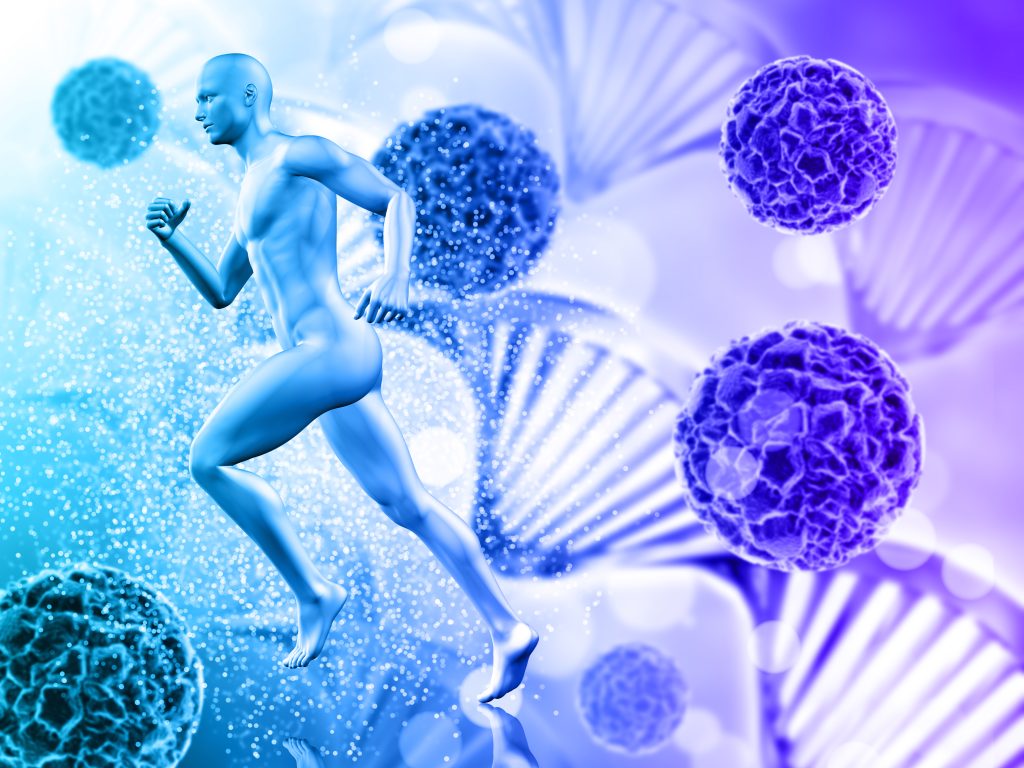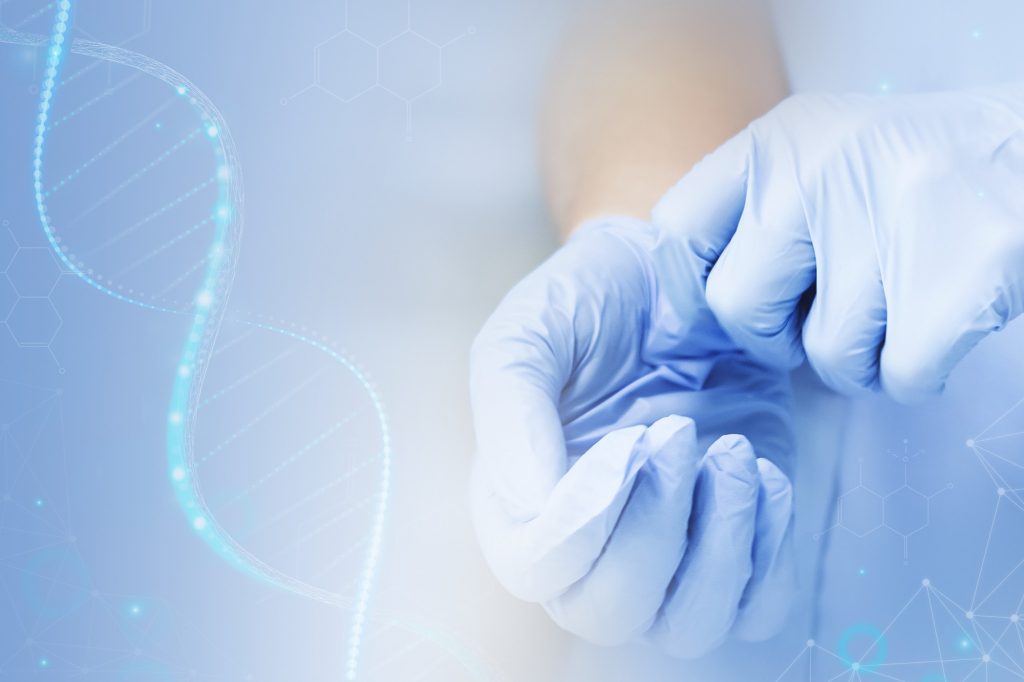Regenerative Medicine Palm Beach Gardens, FL
Regenerative Medicine at Motion Orthopedic & Podiatry Institute: PRP and Stem Cell Therapy
Motion Orthopaedic & Podiatry Institute offers cutting-edge regenerative medicine treatments, including Platelet-Rich Plasma (PRP) therapy and Stem Cell Therapy, to help patients recover from injuries and chronic conditions affecting the musculoskeletal system. These innovative therapies harness the body’s natural healing processes to repair damaged tissues, reduce inflammation, and promote long-term healing without more invasive treatments like surgery. Whether you’re dealing with joint pain, tendon injuries, or arthritis, regenerative medicine may offer a highly effective, minimally invasive solution to restore function and alleviate pain.
What is Regenerative Medicine?
Regenerative medicine focuses on repairing or replacing damaged tissues and organs by stimulating the body’s natural healing processes. In orthopedics, regenerative treatments like PRP and stem cell therapy treat injuries to joints, tendons, muscles, and ligaments, promoting tissue repair and reducing the need for invasive procedures such as surgery.
The two most common regenerative medicine therapies we offer are:
- Platelet-Rich Plasma (PRP) Therapy: PRP therapy involves using a patient’s blood to accelerate the healing process. The plasma containing a high concentration of platelets is injected into the injured area to stimulate tissue regeneration.
- Stem Cell Therapy: Stem cell therapy utilizes the patient’s stem cells, which can differentiate into different types of tissues. These stem cells can be injected into the damaged area to promote the repair of cartilage, tendons, ligaments, and muscles.
Both treatments are minimally invasive, use the body’s cells, and are highly effective in treating various orthopedic conditions.

Conditions Treated with Regenerative Medicine
Regenerative medicine therapies like PRP and stem cell treatments can treat various musculoskeletal system conditions. Some of the most common conditions we treat include:
- Osteoarthritis: Regenerative medicine can help reduce the pain and inflammation caused by arthritis, particularly in the knees, hips, shoulders, and ankles. PRP and stem cells can stimulate the repair of damaged cartilage, slowing the progression of arthritis and improving joint function.
- Tendon Injuries: Chronic tendon injuries, such as Achilles tendonitis or tennis elbow, can benefit from regenerative therapies. PRP and stem cells can enhance the body’s ability to repair damaged tendons and restore strength and flexibility.
- Ligament Injuries: Ligament injuries, such as those in the knee (ACL, MCL) or ankle, can take a long time to heal. Regenerative treatments, which strengthen the damaged ligaments, can accelerate healing and reduce re-injury risk.
- Rotator Cuff Injuries: The rotator cuff is a group of muscles and tendons that stabilize the shoulder joint. Injuries to the rotator cuff can lead to pain, weakness, and limited range of motion. Regenerative medicine can promote the repair of these tissues, reducing pain and improving function.
- Meniscus Tears: Meniscus tears are common knee injuries that can cause pain, swelling, and limited mobility. PRP and stem cell therapy can heal the torn cartilage and restore knee function without surgery.
- Plantar Fasciitis: Regenerative therapies can be particularly effective in treating chronic plantar fasciitis, a condition caused by plantar fascia inflammation that causes pain in the bottom of the foot.
- Joint Pain: Whether caused by injury, overuse, or degenerative conditions, joint pain in the knees, hips, shoulders, or ankles can be effectively managed with regenerative medicine. These therapies can reduce inflammation and promote long-term healing of the joint tissues.
Platelet-Rich Plasma (PRP) Therapy
Platelet-rich plasma (PRP) is one of the most popular regenerative treatments for orthopedic conditions. PRP therapy involves drawing a small amount of the patient’s blood, processing it to concentrate the platelets, and injecting the PRP solution into the injured area. Platelets contain growth factors that play a crucial role in tissue repair and healing. When injected into an injured tendon, ligament, or joint, PRP can help reduce inflammation, promote the growth of new cells, and accelerate recovery.
How PRP Therapy Works
- Blood Collection: A small blood sample is drawn from the patient, similar to a routine blood test.
- Centrifugation: The blood sample is placed in a centrifuge, which spins the blood to separate the platelets from the other components. The platelets are then concentrated into a solution known as platelet-rich plasma.
- Injection: The PRP solution is injected into the affected area under ultrasound imaging guidance to ensure precise placement. The injection stimulates the healing process, promoting the repair of damaged tissues and reducing pain.
Benefits of PRP Therapy
- Natural Healing: PRP therapy uses the patient’s blood, making it a natural and safe treatment option with minimal risk of adverse reactions.
- Minimally Invasive: The procedure is minimally invasive and typically requires little to no downtime. Most patients can return to their normal activities shortly after treatment.
- Accelerated Healing: PRP can speed up the healing process for many conditions, reducing the need for prolonged rest or immobilization.
- Pain Reduction: Many patients experience significant pain relief following PRP therapy, allowing them to regain mobility and function.
Stem Cell Therapy
Stem cell therapy is another powerful regenerative treatment option using the patient’s stem cells to repair and regenerate damaged tissues. Stem cells can develop into various types of cells, such as cartilage, muscle, or bone cells, making them highly effective for treating injuries and degenerative conditions.
How Stem Cell Therapy Works
- Stem Cell Harvesting: Stem cells are usually harvested from the patient’s bone marrow or adipose (fat) tissue. The harvesting process is minimally invasive and typically performed under local anesthesia.
- Concentration of Stem Cells: The harvested stem cells are processed to create a concentrated solution rich in healing cells and growth factors.
- Injection: The concentrated stem cell solution is injected directly into the damaged or injured area, such as a joint, tendon, or ligament. The stem cells then repair the damaged tissues by stimulating new cell growth and reducing inflammation.
Benefits of Stem Cell Therapy
- Tissue Regeneration: Stem cells can regenerate damaged tissues, promoting the growth of new cartilage, muscle, or bone cells. This makes stem cell therapy highly effective for arthritis, tendon injuries, and cartilage damage.
- Non-Surgical Alternative: For many patients, stem cell therapy can be a non-surgical alternative to procedures like joint replacement or ligament reconstruction.
- Long-Lasting Results: While the results of stem cell therapy may take a few weeks or months to manifest fully, many patients experience long-term relief from pain and improved function.
- Personalized Treatment: Because stem cell therapy uses the patient’s cells, the treatment is tailored to each individual’s condition and needs.

Who is a Candidate for Regenerative Medicine?
Regenerative medicine therapies like PRP and stem cell therapy are ideal for patients who are looking for a minimally invasive treatment option to promote healing and reduce pain. Candidates for these therapies typically include individuals with:
- Chronic joint pain or arthritis that has not responded to conservative treatments like physical therapy or medications.
- Tendon or ligament injuries that are slow to heal or are causing ongoing pain and discomfort.
- Athletes or active individuals who want to avoid prolonged recovery times or surgical procedures.
- Patients with early-stage osteoarthritis or cartilage damage who wish to delay or avoid joint replacement surgery.
During your Motion Orthopaedic & Podiatry Institute consultation, our specialists will evaluate your condition and discuss whether PRP or stem cell therapy is the right option for you.
The Procedure: What to Expect
PRP and stem cell therapies are performed as outpatient procedures at Motion Orthopaedic & Podiatry Institute, typically taking less than an hour to complete. Here’s what you can expect during the process:
- Consultation: During your initial consultation, our orthopedic specialists will assess your condition, review your medical history, and determine if PRP or stem cell therapy is appropriate for your needs. Imaging tests, such as X-rays or MRI, may be used to evaluate the extent of the damage.
- Preparation: On the day of the procedure, you will be comfortably seated, and the area to be treated will be cleaned and prepped.
- Injection: For PRP therapy, a blood sample will be drawn and processed. For stem cell therapy, the stem cells will be harvested from your body. Once the solution is prepared, it will be injected into the targeted area using ultrasound guidance to ensure precise placement.
- Post-Procedure Care: Most patients can return home immediately after the procedure. You may experience mild discomfort or swelling at the injection site, but this usually resolves within a few days.
Recovery and Results
Recovery from PRP or stem cell therapy is generally quick, with most patients able to resume their normal activities within a few days. However, you should avoid strenuous activities or high-impact sports for a few weeks to allow the treated area to heal correctly.
The results of regenerative medicine therapies are not immediate but typically become noticeable within a few weeks as the tissues begin to heal and regenerate. Full results may take several months to develop, but many patients experience long-lasting relief from pain and improved joint or tissue function.
Why Choose Motion Orthopaedic & Podiatry Institute for Regenerative Medicine?
At Motion Orthopaedic & Podiatry Institute, we are committed to offering the most advanced, evidence-based treatments for orthopedic and podiatric conditions. Our regenerative medicine therapies are designed to promote natural healing, reduce the need for surgery, and help patients return to active lifestyles.
- Experienced Specialists: Our team of board-certified orthopedic specialists and podiatrists has extensive experience in regenerative medicine and is dedicated to providing personalized care tailored to your specific needs.
- State-of-the-Art Facility: We use the latest technology and techniques in regenerative medicine to ensure the best possible outcomes for our patients.
- Comprehensive Care: From diagnosis to treatment and rehabilitation, we offer a full range of services to support your recovery and overall well-being.
If you are suffering from joint pain, tendon injuries, or arthritis and are looking for a minimally invasive treatment option, Motion Orthopedic & Podiatry Institute is here to help. Contact us today to schedule a consultation and learn more about our PRP and stem cell therapy options.
- Orthopedic Surgery
- Podiatry Care
- Regenerative Medicine
- Sports Medicine
- Vein Treatment
- Arthroscopic & Joint Replacement Surgery:
- Knee Pain
- Shoulder Pain
- Hip Pain
- Sports Injuries
- Tendonitis and Bursitis
- Carpal Tunnel Syndrome
- Trigger Finger
- Wound Care
- Concierge Orthopaedic Services